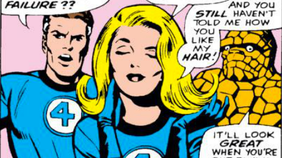Brooker's Basic Batman
- hannahlien
- Feb 23, 2015
- 3 min read
Reading Will Brooker’s “1939-1945: Origins and Wartime,” I found it interesting when he suggested that Batman at his core has changed very little. I also found myself agreeing with him after some thought. My initial response was that the Batman that I read in the 1963 comic, “Robin Dies at Dawn,” was a very different character from the one I found in the earlier comics of the 1930-40’s and even from the Batman of 1970’s comics.

The 70’s Batman was more serious, and there is a definite air of Gothicism. The same is true for Batman at his beginnings. However, in the 60’s, the story feels clunkier and campy. Despite dealing with the supposed death of a main character, “Robin Dies at Dawn,” is, in my opinion, clumsy. The writers jerk their readers around; when Robin appears to die about halfway through the story, it is really all just a medically induced dream. And later, when Robin’s life is really in danger the feeling of danger is shattered by the sight of Robin tied comically to a large balloon.
“Jokers Five-Way Revenge” and “There’s No Hope in Crime Alley” are both darker and more serious in tone. There is a definite air of danger as Batman rushes through Gotham to save the Joker’s former associates from the criminal’s revenge. “There’s No Hope in Crime Alley” illustrates how deeply Bruce Wayne was affected by the death of his parents. It also portrays the hero protecting a poor, crime-ridden community. He protects lone travelers from muggers and thugs, foregoing the usual high-stakes battles with supervillains. This implies that the Batman sees importance in preventing all kinds of crime, not just the big-time stuff.

However, according to Brooker, all of these versions of Batman possess the same core character. He distills this down to a single paragraph stating: “Batman is Bruce Wayne, a millionaire who dresses in a bat-costume and fights crime. He has no special powers but is very fit and strong, and very intelligent. He lives in Gotham City. He fights crime because his parents were killed when he was young. He is often helped by his sidekick, Robin. He fights villains like the Joker,” (40). This basic paragraph outlining the character of Batman can be applied to virtually every iteration of the character. It’s only when going to the very start that the comics lack elements like the Joker, Robin, Gotham, and the tragic backstory, all of which were added in later.
I feel that this basic outline in addition to the many different ways that Batman is presented to his fans adds to the folkloric feel of the character, and to superheroes in general. When someone relates a folktale to another person, the teller will embellish and change the story to suit the situation of themselves and the listener. The Batman stories stayed the same at the core, but the tone of the stories was able to change between writers and through different time periods. Goofy versions of the character, like those from the old Adam West TV show and Batman and Robin to the grimdark Batman films by Christopher Nolan are all recognizable as the same character, just as Cinderella is recognizable in different versions of the fairytale. The core characteristics that make up Batman’s character are what make him into a sort of modern day folk figure.




















Comments